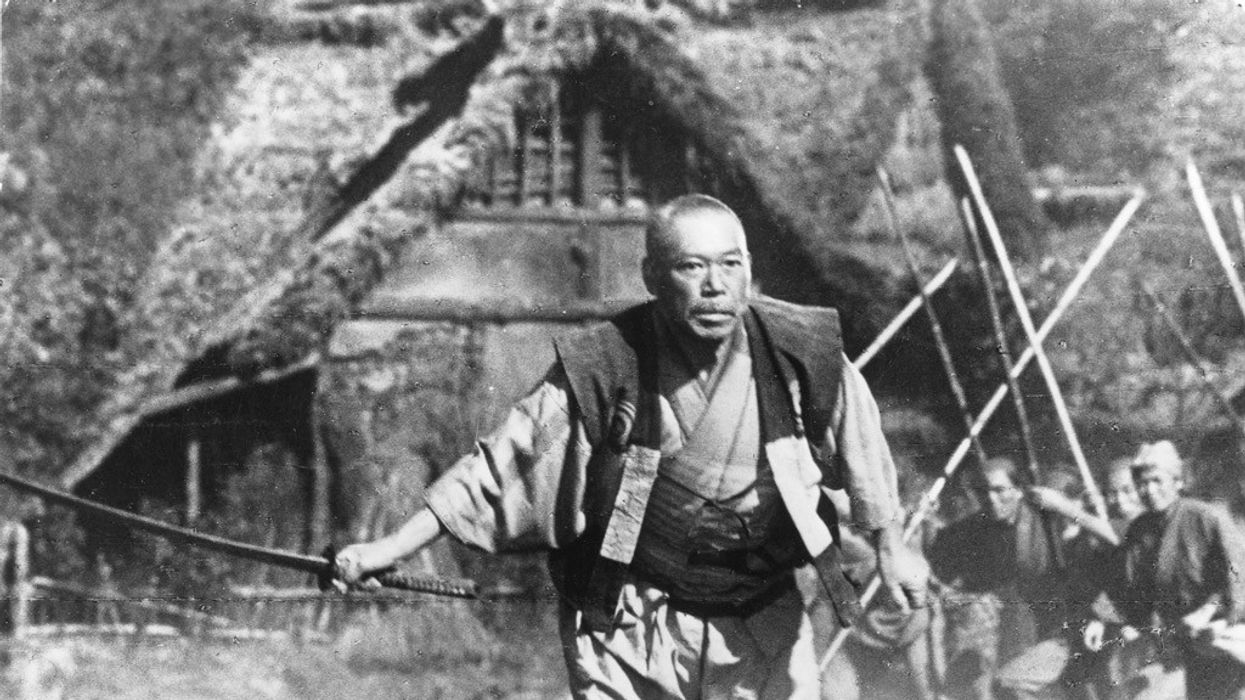Watch: How 6 of the Best Shots in Movie History Use Camera Movement
Discover how six of the most common camera moves created some of the most classic shots of all time.

What separates the art of photography from cinema (besides sound, of course) is movement: movement of the action within the frame, but also the movement of the camera itself. This may sound obvious, but any filmmaker will benefit from watching this video from CineFix, and studying the way these classic film shots employ camera movements to achieve various emotional, narrative, and spatial effects. We break them down for you below.
The pan (The Seven Samurai, 1954, Dir: Akira Kurosawa)
One of the most common camera moves, the pan is a "simple horizontal move of the camera," usually performed on a tripod. While simple, it can have intense effects, as seen here in this clip from Akira Kurosawa's The Seven Samurai (shot starts at 2:28 in the video). As the video states, "While a modern director might gussy it up with fancy crane moves and crazy fast dollies, Kurosawa does just the opposite," and here a simple pan performs the function. Because of the long telephoto lenses he is using, the slightest movement is magnified and so "the littlest movement has the greatest effect."
"While a modern director might gussy it up with fancy crane moves and crazy fast dollies, Kurosawa does just the opposite."
The tilt (The Sacrifice, 1986, Dir: Andrei Tarkovsky)
The diametrical opposite of a pan, the tilt is movement in the vertical axis, and in this clip (at 4:56 in the above video) from Tarkovsky's film, the shot "combines slow-motion photography [and] a switch to black and white in a pitch perfect tilt move." The narration continues, "We are awed by the beauty of the starting frame," but the shot also serves a narrative function as it moves through the frame and reveals new details in dream-like fashion.
The roll (The Dark Knight, 2008, Dir: Christopher Nolan)
Also known as the "dutch-tilt," camera rolls help to impart a sense of chaos and canted madness to a shot. In this scene from The Dark Knight, Christopher Nolan uses the move in a fascinating way, allowing us to first view The Joker from Batman's POV, upside down, and then, by the end of the shot, things have reversed so that "something is off, we have entered [The Joker's perspective]" and objects drape up in a "backwards gravity."
Tracking shot (Taxi Driver, 1976, Dir: Martin Scorsese)
In a famous sideways tracking shot, Scorsese viscerally allows the audience to experience Travis' loneliness following his date with Betsy. He tries several times to make contact with her, and in this shot, her rejection of him and the effect this has on "god's lonely man," as he refers to himself, helps to clarify the reasons (insane though they may be) behind his subsequent descent into the hell of his own mind in the film's third act.
Boom shot (Soy Cuba, 1964, Dir: Mikhail Kalatozov)
In this famous shot (at 15:11 in the CineFix video) from the pioneering Soviet film, the camera, following a funeral scene, seems to "float away like a lost balloon," and in doing so, leaves the world behind while capturing the world that exists above the crowd below. Many of the shots in this film feel impossible, and its fans include directors like Martin Scorsese and P.T. Anderson, whose Boogie Nights was directly influenced by this shot.
Be sure to check out the rest of the video, which features clips from other films that employ the same moves, and check out each of the movies themselves, because these clips only begin to hint at their greatness (cinematographically, and otherwise).
Source: CineFix












